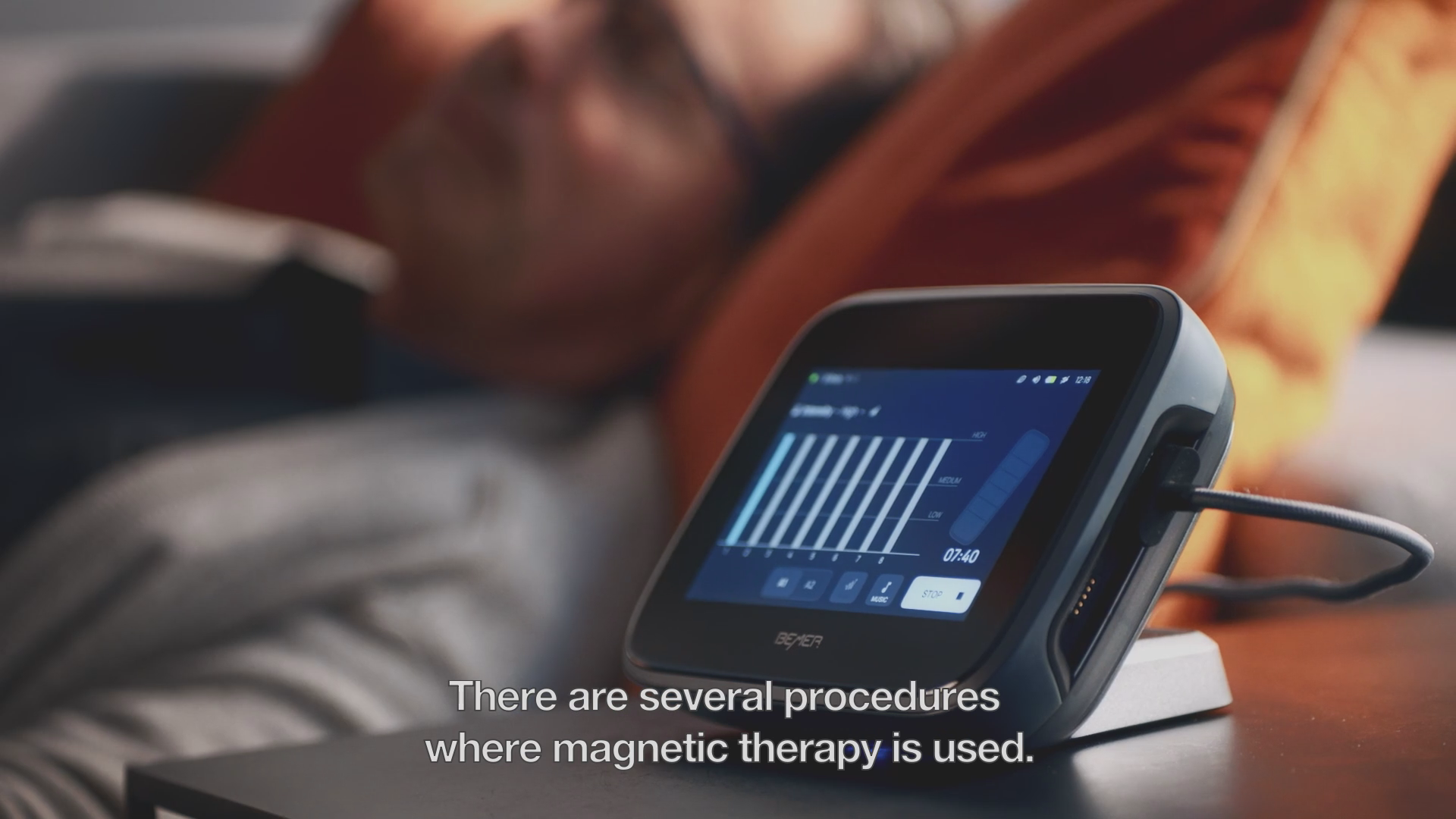The BEMER physical vascular therapy
The BEMER physical vascular therapy targets key areas in the body. It works entirely without chemicals or “miracle cures”. While this may sound like magic, it’s actually just physics! The BEMER applications for humans represent an evolution of magnetic field therapy. It uses a pulsating magnetic field to deliver the unique, patented BEMER signal configuration to your body. BEMER exerts a positive, targeted effect on the autoregulatory component of vasomotion. (1) As a result, the BEMER application can support cell maintenance, i.e., the process of supplying cells with nutrients and oxygen while also removing metabolic by-products. (1/5/6) The mechanism of action of BEMER medical products has been the subject of numerous scientific studies.
Good to know. Good for you.
Health and wellbeing on the same wavelength. The base signal on which the BEMER therapy is based generates a very low-frequency magnetic field (30 Hz), which is completely harmless to the organism – both human and equine. Even a computer generates a magnetic field of a higher frequency!
You won’t feel it immediately. But you can see the BEMER effect under an intravital microscope after just a few minutes of treatment.
Before the BEMER therapy
After the BEMER therapy
Better blood circulation. Better supply of oxygen and nutrients.
Red blood cells are like little transporters that deliver oxygen throughout the body. They begin their journey through the circulatory system and then arrive at the cells via the microcirculation, supplying them with oxygen. From there, the red blood cells absorb carbon dioxide before being carried away through the veins.
This is what medical experts say:

Dr. med. Karl-Peter Franke
Specialist in Anesthesiology

Dr. med. Annette Weiß
General Practitioner

Dr. med. univ. Helmut Dieplinger
General Practitioner
1 Klopp, R. C., Niemer, W., & Schulz, J. (2013). Wirkungen einer physikalischen Stimulierung der spontanen arteriolären Vasomotion bei Rehabilitanden unterschiedlichen Alters. Journal of Complementary and Integrative Medicine, 10(Suppl), P15-P22. // 5 Levy, B. I., Ambrosio, G., Pries, A. R., & Struijker-Boudier, H. A. J. (2001). Microcirculation in hypertension: a new target for treatment? Circulation, 104(6), 735-740. // 6 Schmidt, R. F., Lang, F., & Heckmann, M. (Eds.). (2011). Physiologie des menschen: mit pathophysiologie. Springer-Verla, S768